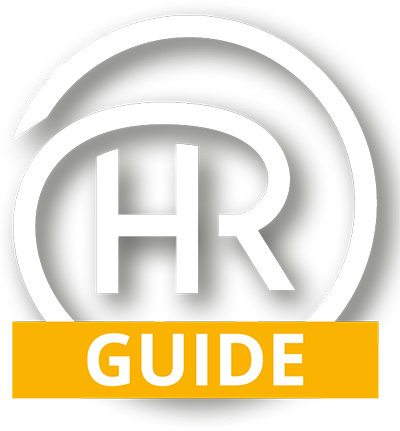Managing your Recruitment Strategy – A Step by Step Guide
Written by Andrew Johnson, Founder and CEO HRGuide - Wed 23rd Oct 2024
Introduction
Developing a detailed recruitment strategy can help you outline your hiring goals and how to reach them. A good recruitment strategy is also key for sourcing and hiring more qualified candidates. It's helpful to learn what to include in a recruitment strategy to ensure it's easy for all hiring managers to follow. In this article, we explore what a recruitment strategy is, what to include and how to create one.
What is a recruitment strategy?
A recruitment strategy is a plan with steps to find, recruit, hire and keep employees. The strategy usually reflects company values and goals, allowing managers to plan for the future. You may want to design your strategy to be flexible and easy to update each year because hiring needs can change. Your company might grow quickly and require more employees than it did the year before. If your recruitment strategy is already flexible, you might experience fewer delays in meeting those new goals.
What to include in a recruitment strategy
Recruitment strategies can take different forms and have varying levels of detail. Whatever kind of strategy you want to create, here are some items to include:
1. Goals: Every company has different goals, but some common ones to consider are how many people you want to hire, if you want to hire more diversely and if you want to change your hiring process.
Consider numbers to hire:
- What is the number of Apprentices we need to recruit and in what disciplines?
- What number of Technical Staff versus Management do we need to recruit now and in the future?
- Do we need to recruit individuals with specific skills e.g. social media, Finance, HR etc?
- Do we have the trained individuals with the necessary leadership skill to join our senior team in the future? (Succession Planning)
2. Positions: Decide how many employees you want to hire. Consider if any employees are leaving soon or if there is a department or team that could benefit from the skills a new employee could provide.
- What is the average age of our employees? Can we expect an exit of talent at a certain point? What do we do to prepare for that?
3. Timeline: Think about which positions you want to fill as soon as possible, and which positions you can fill throughout the year. Your timeline could have a big impact on the other parts of your recruitment strategy. Write a milestone plan detailing numbers of recruits per quarter.
4. Budget: Recruiting costs can include marketing, travel and technology. Take into consideration your budget for expenses at later stages of the recruitment process, like background checks.
Develop a budget for annual recruitment costs. This to include:
- LinkedIn costs per annum – consider bolt Ons?
- Annual costs of Indeed, CV Library and Total Jobs
- Agency Costs for specific roles
- Additional costs for developing the recruitment section of the company website
5. Target audience: Consider the skills or experience you most want in a candidate. If your position requires knowledge of a certain area, you might advertise in that area so you target locals.
- Need to define the companies we can recruit from? Where are they located? What are the costs/risks of recruiting from these companies? Are there any alternative sectors we can recruit from? Can we consider recruiting form abroad?
6. Marketing plan: Once you have a target audience, it's time to decide how you're going to market toward them. Think about the kinds of advertising open to you and what best fits your needs.
What is our Marketing strategy?
- What collateral do we need?
- How do we engage?
- How do generate a call to action?
- What will this look like?
7. Update or create Job Descriptions: update existing job descriptions in small ways, like using clearer language, or big ways, like adding additional responsibilities. Use them as templates for creating your new job descriptions. Make sure that both updated and new descriptions are comprehensive, clear and interesting to candidates. Show potential candidates why this position is right for them.
8. Use Technology: You can use technology to streamline your process and make your strategy readily available to other hiring managers. Here's a few kinds of technology you may want to explore for your recruiting process:
- Job search platforms – what platforms do we want to use? What is the value and benefit?
- Photo or video editing software
- Applicant tracking systems
- Video calling services
- Analytics applications
9. Selection process: You can develop a plan for every step of your hiring process. Building your recruitment strategy is a great time to look at that process and decide if you want to change it.
- Can we create a selection process that engages applicants early? What interests them and excites them versus other companies?
10. Use technology: You can use technology to streamline your process and make your strategy readily available to other hiring managers. Here's a few kinds of technology you may want to explore for your recruiting process:
- Job search platforms – what platforms do we want to use? What is the value and benefit?
- Photo or video editing software
- Applicant tracking systems
- Video calling services
- Analytics applications
11. Promote widely
It's good to focus your marketing toward a target audience, but it's also valuable to market widely. Internet and in-person marketing both have their benefits. Most social media is free, so you could use the social media presence you already have or focus on building it. You can also buy ads or promoted posts on social media and websites. Trade journals can expand on the audience you're reaching. Look into job fairs or professional conventions to connect with potential candidates in person.
- Consider the range of recruitment vehicles you can use? Is it:
- Social media – Facebook, TikTok, Twitter, YouTube
- Fairs, Conventions, Industry media
12. Make your company website applicant-friendly: If you want to attract candidates and encourage them to apply, make your website easy for them to navigate and include resources. You could give potential applicants an idea of what it's like to work at the company by posting current employee testimonials or creating an FAQ page.
- Need to separate out the Careers pages on your site
- Create Team Member testimonials
- Create a FAQ page
- Focus on Apprenticeships and Career Progression
13. Define your selection process: It's good to have a clear, formal selection process so hiring remains fair and balanced. Review the selection process you currently use for strengths and weaknesses. Maybe you want to research using AI to sort through applications, add a round of phone interviews before in-person interviews or form a selection committee. Decide what makes the most sense for the company's resources and needs.
14. Develop or refine your onboarding process: A clear onboarding process might help you keep employees by making them feel more confident and secure on their first day. Decide who's going to handle training and be a primary resource for new employees. You may want to consider if you expect a new employee to take on all of their responsibilities on day one, or if you want to set a schedule for them to adjust more gradually. Consider developing informative documents or presentations.
Having a clearly defined, targeted recruitment strategy serves as a vital tool for keeping the pipeline of talent coming into the business, ensuring you have the necessary skills and talent to grow the business now and in the future.
Download our more detailed step by step HR How to Guide for more detail on Managing your Recruitment Strategy by subscribing to https://www.hrguide.co.uk/subscribe.php
If our step-by-step HR How to Guide doesn’t give you the support you need, simply call us on our HR Helpline for expert advice.

